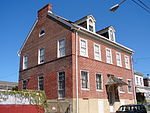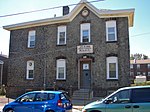On May 12, 2015, an Amtrak Northeast Regional train from Washington, D.C. bound for New York City derailed and wrecked on the Northeast Corridor near the Kensington neighborhood of Philadelphia, Pennsylvania. Of 238 passengers and 5 crew on board, 8 were killed and over 200 injured, 11 critically. The train was traveling at 102 mph (164 km/h) in a 50 mph (80 km/h) zone of curved tracks when it derailed.Some of the passengers had to be extricated from the wrecked cars. Many of the passengers and local residents helped first responders during the rescue operation. Five local hospitals treated the injured. The derailment disrupted train service for several days.The National Transportation Safety Board determined that the derailment was caused by the train's engineer (driver) becoming distracted by other radio transmissions and losing situational awareness, and said that it would have been prevented by positive train control, a computerized speed-limiting system that was operational elsewhere on the Northeast Corridor, but whose activation at the wreck site had been delayed due to regulatory requirements. The track in question was also not equipped with ATC (automatic train control), an older and simpler system that had been operational for years on the southbound track of the curve at which the derailment occurred, and that also would have limited the train's speed entering the curve. Shortly after the derailment, Amtrak completed ATC installation on the northbound track.The 2015 wreck was the deadliest on the Northeast Corridor since 1987, when 16 people died in a wreck near Baltimore.The train engineer, 32-year old Brandon Bostian, was arrested and charged with one count of causing a catastrophe, eight counts of involuntary manslaughter, and 238 counts of reckless endangerment. On March 4, 2022, a jury acquitted Bostian on all counts.









